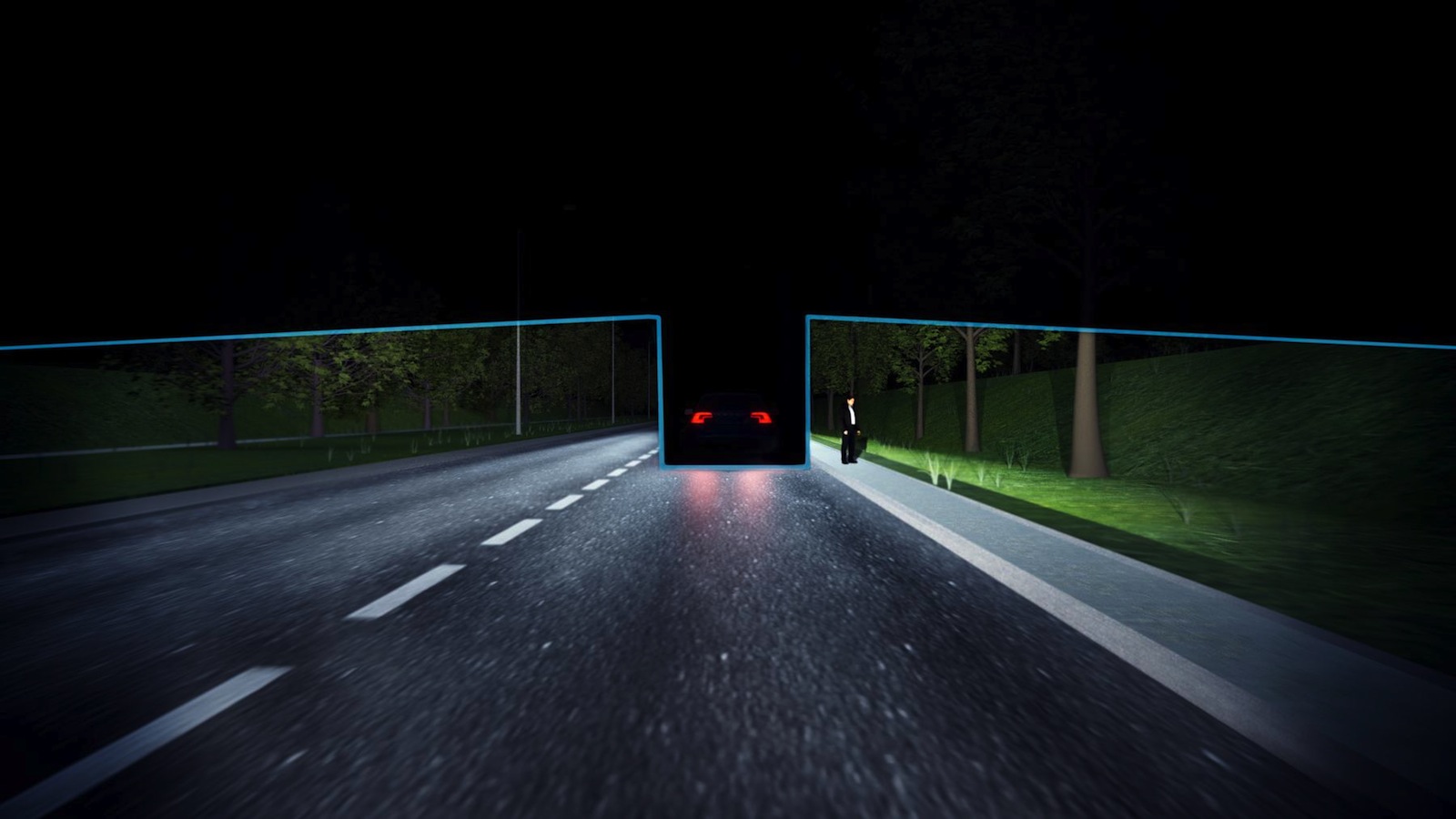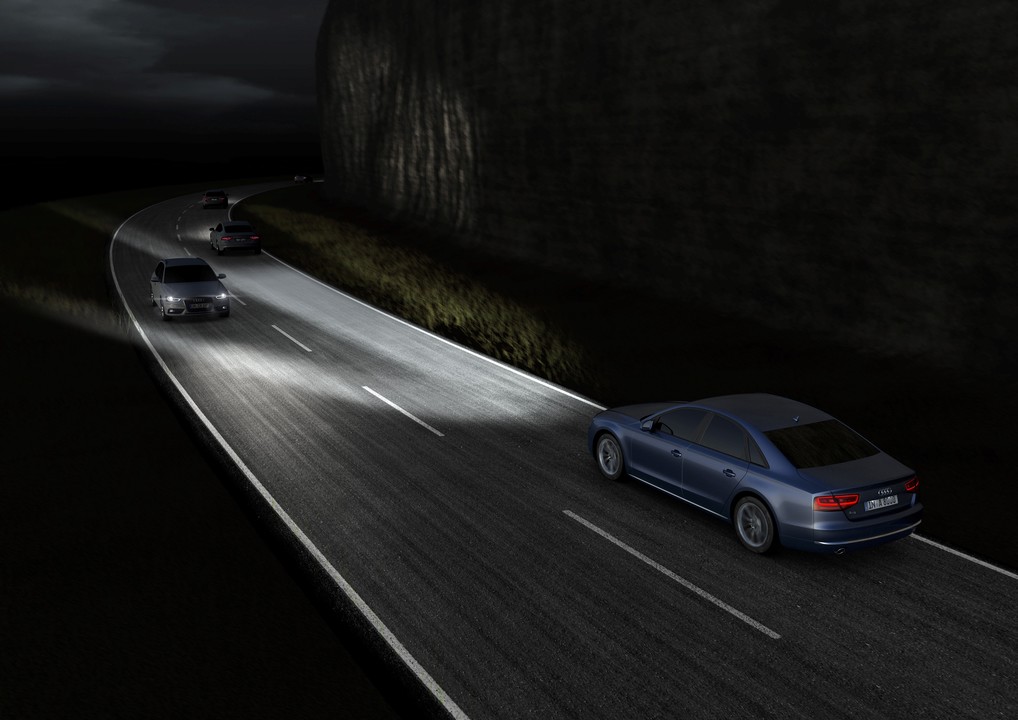You are using an out of date browser. It may not display this or other websites correctly.
You should upgrade or use an alternative browser.
You should upgrade or use an alternative browser.
Adaptive headlights final rule
- Thread starter Vercingetorix
- Start date
SUMMARY: This document amends NHTSA’s lighting standard to permit the certification of adaptive driving beam (ADB) headlamps. ADB headlamps utilize technology that actively modifies a vehicle’s headlamp beams to provide more illumination while not glaring other vehicles. The requirements adopted today are intended to amend the lighting standard to permit this technology and establish performance requirements for these systems to ensure that they operate safely. ADB has the potential to reduce the risk of crashes by increasing visibility without increasing glare. The agency initiated this rulemaking in response to a petition for rulemaking from Toyota Motor North America, Inc.
So, some new technology from carmakers is being allowed.
So, some new technology from carmakers is being allowed.
NHTSA seems so concerned about utilizing technology to make driving at night safer for everyone, yet, we still have brand new vehicles being produced that would be universally regarded as having VERY POOR lighting characteristics. Not lighting the road, yet blinding everyone else.
Toyota is a prime offender. Maybe they have identified that ADB reflectors are cheaper to make than an LED with proper optics and that was the reason for the petitionNHTSA seems so concerned about utilizing technology to make driving at night safer for everyone, yet, we still have brand new vehicles being produced that would be universally regarded as having VERY POOR lighting characteristics. Not lighting the road, yet blinding everyone else.
Done well, adaptive headlights will be a major step forward....done well. The US lighting rules and certification process are tough; they tend to stifle innovation somewhat, or at least used to.
To the previous point, it is sad how bad some new cars lighting is. From my experience, many modern cars headlights are still inferior to a 60's technology, quality, 'E-Code' 7" lamp... Shouldn't be the case today, but this area is at an intersection or technology, style, regulations and cost.
To the previous point, it is sad how bad some new cars lighting is. From my experience, many modern cars headlights are still inferior to a 60's technology, quality, 'E-Code' 7" lamp... Shouldn't be the case today, but this area is at an intersection or technology, style, regulations and cost.
Cool. Guess the good headlights BMW has in the EU can finally come here.
The BMW laser high beams will shine around a car in front.Does ADB do something if someone is following too closely with their high beams on? They shouldn't be sold if they don't, because it will just encourage people to leave them on.
The BMW laser high beams will shine around a car in front.
My goodness, it's like magic.
About time.
Some vehicles already come with permanent high beams. Vehicles in front and oncoming traffic are spared by the high beam being blocked selectively from aiming up too high. This is accomplished with an electromechanically actuated, variable physical shield in the optical path within the light. Similar in concept to but much more complex than bi-xenons that use a moveable shield to switch from low to high beam.My goodness, it's like magic.

Volvo's Latest High-Tech Trick: Permanent High-Beam Headlights
For decades, Volvo has staked its reputation on outstanding safety features. But now, nearly all of Volvo's competitors offer arrays of airbags, automated braking systems, and similar gadgetry, forcing Volvo to think further outside the box. In recent years, Volvo engineers have developed...
Last edited:
Some vehicles already come with permanent high beams. Vehicles in front and oncoming traffic are spared by the high beam being blocked selectively from aiming up too high. This is accomplished with an electromechanically actuated, variable physical shield in the optical path within the light. Similar in concept to but much more complex than bi-xenons that use a moveable shield to switch from low to high beam.

Volvo's Latest High-Tech Trick: Permanent High-Beam Headlights
For decades, Volvo has staked its reputation on outstanding safety features. But now, nearly all of Volvo's competitors offer arrays of airbags, automated braking systems, and similar gadgetry, forcing Volvo to think further outside the box. In recent years, Volvo engineers have developed...www.thecarconnection.com
Now that is a neat trick. But it also sounds like something very expensive to repair.
More likely the whole light will have to be replaced.Now that is a neat trick. But it also sounds like something very expensive to repair.
Same as every other LEDMore likely the whole light will have to be replaced.
I wonder how NHTSA approved ADB headlights will actually perform. They have partially rejected SAE J3069 ( this SAE Recommended Practice provides test procedures, performance requirements, and design guidelines for ADB headlights) and the UN lighting regulations that are followed in Europe. So it looks like it will be a hodgepodge of performance requirements.
A comment from candlepowerforums that sums up the situation:
A comment from candlepowerforums that sums up the situation:
........ I've read the final rule three times (and counting). It's a heaping helping of smug, deliberate scorn for well-proven international practice, with substitution instead of rules pretty much guaranteed to make US ADB systems inferior to those in the rest of the world.....
Last edited:
I just don't get the unwillingness to accept the European lighting standards...can it still be protectionism at this point?? Adopting them would reduce costs somewhat, not needing separate designs, and also provide better lighting. Then again, these are the same regulatory bodies that loved sealed beams for ages. Oh well..I wonder how NHTSA approved ADB headlights will actually perform. They have partially rejected SAE J3069 ( this SAE Recommended Practice provides test procedures, performance requirements, and design guidelines for ADB headlights) and the UN lighting regulations that are followed in Europe. So it looks like it will be a hodgepodge of performance requirements.
A comment from candlepowerforums that sums up the situation:
From the editor of Driving Vision News (DVN) is this 2018 comment, when NHTSA proposed their ADB requirements:

 www.linkedin.com
www.linkedin.com
....But the particulars of the [NHTSA] proposal are raising eyebrows and hackles among the vehicle lighting engineering community, for it diverges in some questionable ways from consensus best practices...
...It's not surprising that the NHTSA proposal rejects the notion of adopting the ADB provisions in UN Regulations 48 and 123; as DVN reported in a three-part series, UN Regulations are structurally incompatible with the American legal and regulatory system...
...But unlike Canada's recent legalisation of ADB, the NHTSA proposal also rejects key aspects of SAE J3069, the technical standard devised explicitly to reconcile those structural incompatibilities and describe the characteristics, features, configuration, and performance of an ADB system to comport with the American situation....
....NHTSA also want to keep the high beam intensity limit at the same value that hasn't changed since 1978, in the sealed-beam era: not more than 75 kcd (120 Lx @ 25 m) per side of the vehicle. UN Regulations, in contrast, permit up to 215 kcd (344 Lx @ 25 m) per side of the vehicle with an ADB system....

US proposal on ADB raises hopes, alarms
NHTSA, the Department of Transportation agency in charge of writing and enforcing vehicle safety standards in the USA, have published a Notice of Proposed Rulemaking to amend of Federal Motor Vehicle Safety Standard â 108 so ADBâadaptive driving beamâwould be explicitly permitted on vehicles in the
 www.linkedin.com
www.linkedin.com
JHZR2
Staff member
Seriously, yes. Those multi-beam lights in Acura vehicles are the worst with that. So much glare.NHTSA seems so concerned about utilizing technology to make driving at night safer for everyone, yet, we still have brand new vehicles being produced that would be universally regarded as having VERY POOR lighting characteristics. Not lighting the road, yet blinding everyone else.
What Now for ADB: Mandatory? Obstructed? – DVN
...ADB is legal in the U.S., but only if it meets the unique requirements NHTSA have just written into FMVSS № 108. These include a “transition zone” of just one degree from a shadowed to an unshadowed region of the beam (attainable only by very expensive pixel/matrix ADB systems) as well as tests on a curve of 400 metres’ radius (difficult to manage and questionably relevant to any real-world issue). Even the old VHAD aiming system has been brought back from its well-deserved grave, yet another seemingly pointless divergence from the UN specification which has racked up millions of unproblematic kilometres and miles everywhere else in the world...
...ADB as specified by the UN Regulations is significantly improving night driving safety; it saves lives and reduces injury and property damage, all over the world, except in the United States. Nevertheless, NHTSA—nominally a safety authority—hinders it by putting out impractical, unrealistic rules. We’d like to believe NHTSA genuinely wants the best for U.S. traffic safety, but they surely seem to have ignored and rejected the world’s expertise on the subject, and automakers are unlikely to take a chance on offering ADB if they can’t be completely certain their system is compliant with NHTSA’s 300-page rule...
Similar threads
- Replies
- 10
- Views
- 726
- Replies
- 9
- Views
- 1K
- Locked
- Replies
- 10
- Views
- 2K
- Replies
- 31
- Views
- 6K
